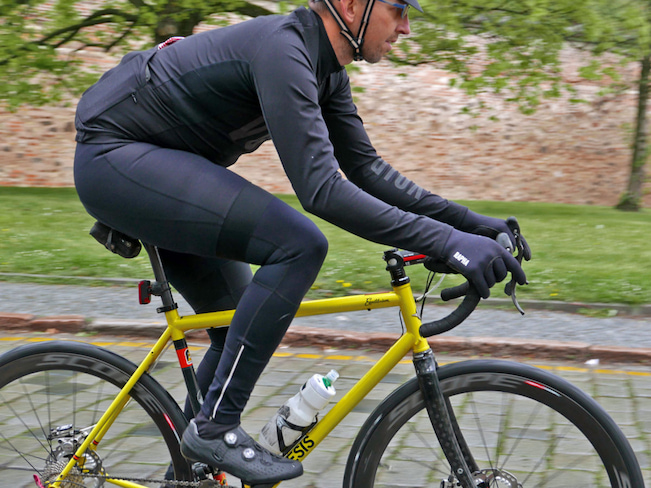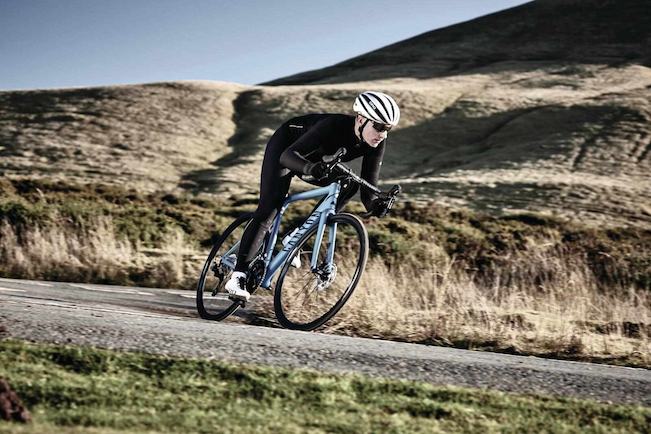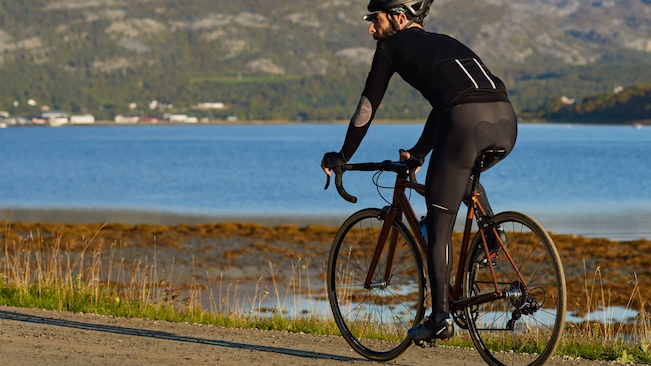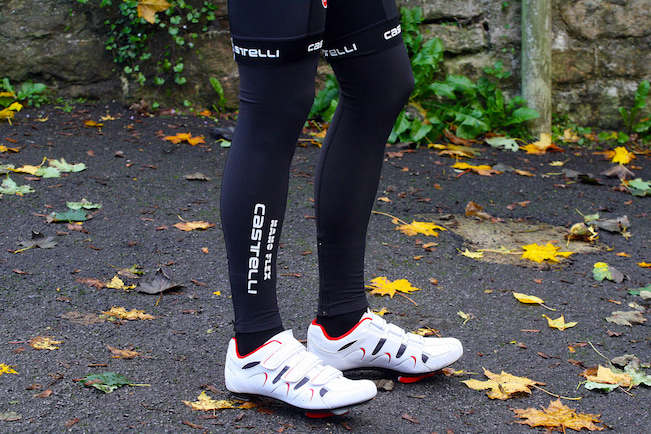As road and gravel riders, we are too frequently reminded of the unpredictable nature of the weather. Riding a bike for a few hours at a time can sometimes mean having to deal with rapidly changing conditions. Your choice of kit can frequently affect how well you adjust mid-ride. In the end, there is no such thing as bad weather, only bad clothing!
Why Wear Leg Warmers
You might wonder, “Why not just wear a pair of cycling bib tights?” and the answer is because in cold weather tights might serve the same purpose, but they are not nearly as adaptable. Therefore, a pair of mountain bike leg warmers you can peel off and stuff in a jersey pocket is a godsend! They come in quite handy when cycling on your BMX in the highlands or before a lengthy, icy descent.

Additionally, you may purchase insulated bib shorts, which, when worn with leg warmers, provide a little extra insulation on chilly days. That way you can stay warm and comfortable during early-morning training rides or the first few minutes of a ride when your muscles are still warming up. And, when the sun appears and you’ve warmed up enough, they can easily be taken off.
The opposite is also true; on days that may appear sunny but are likely to turn chilly and rainy, you can easily carry leg warmers in your pocket or backpack and put them on when necessary. The heat energy that was stored up throughout the ascent swiftly disappears in the face of a strong mountain breeze during the long descents that alpine tourers may also find them handy for.
Important Considerations
Best Material
Your ideal mountain bike leg warmers should be constructed of a material with strong wicking capabilities, which are the capacity to take moisture from near to your skin and to the fabric’s surface where it may evaporate, helping you avoid being wet and chilly.
For that reason, many leg warmers have names like “Windstopper” or “Thermoflex,” which are excellent indicators of the performance priorities of the garment. These materials offer the perfect balance of light weight, durability, and technical performance.
Most leg warmers are made from synthetic materials like polyester, polypropylene, polyamide, or a proprietary blend. Given the circumstances they are meant for, many leg warmers are built to provide some kind of thermal protection by trapping a layer of air adjacent to your skin where it warms up and insulates you. Other options may include membranes that were created specifically to provide more wind and water resistance but at the expense of a little less breathability.
Construction
Multiple panels are used in the construction of high-end leg warmers, providing additional flexibility where it’s required, such as stretchy Lycra or Spandex around the knees, and additional protection where it is necessary such as wind-resistant panels on the front of the thighs. Unlike these, cost-effective leg warmers usually come with a single panel.

Proper Fit
To enhance wicking and heating characteristics and to prevent them from slipping down and bunching around the ankles, leg warmers must fit closely adjacent to the skin. To avoid loose fabric from snagging in the chainrings while allowing the leg warmer to be easily placed on and taken off, look for silicone gripper bands at the tops of the thighs for a comfortable but secure grasp.
As with any compression clothing, some leg warmers may be made with a certain amount of compression, with the claimed benefits of enhanced blood flow to the muscles for better performance and injury resistance, and less tiredness.
Sizing
Many individuals tend to size up their bib shorts, tights or jerseys. Do what works best for you and suits your comfort level. But, be careful not to do the same with your leg warmers or another type of warmer. Leg warmers must fit you perfectly for them to stay up.
You’ll wind up with a garment that doesn’t operate rather than only altering the overall appearance, similar to what a looser jersey does. Pay close attention to the manufacturer’s sizing instructions, and if you are in doubt about the size, go smaller. Leg warmers feature a lot of elasticity to accommodate a little tight fit.
With or Without a Zipper
The intended usage and level of flexibility you require will determine whether you’ll need a zipper. Lighter and more comfortable designs usually have fewer features. The MTB leg warmers without a zipper are ideal if you need a thin warmer to fill the space between bib tights and bib shorts. Although pausing to take off your shoes is required, it’s not difficult. On the other hand, it’s much simpler to use a zipper and you won’t have to take off your shoes if you require anything heavy for a portion of the ride and plan to shed it mid-ride.

Best MTB Leg Warmers to Buy
POC Thermal Legs-Uranium Black
On chilly rides, the Thermal Legs will keep you toasty as these snug-fitting leg warmers are made of a four-way stretch fabric that has been given a fluorocarbon-free DWR treatment to provide water resistance. A panel that covers the front of the knee has a brushed lining for further warmth and comfort.
Poc thermal leg warmers are designed with an elastic gripper and silicone tabs at the top for security and a seamless fit with bib shorts. They’re specifically shaped for a road cycle sitting position. To improve rider visibility in dim light, there’s also reflective patterning on the calf.
Castelli Nano Flex 3G
Castelli’s Nano Flex 3g leg warmers are specifically designed to handle mild rain. The exterior face of the garment adds the magic of Nano Flex, while the inner face is a cosy and warm fleece that retains heat. Nano Flex is a five-phase nanotechnology procedure with a thin, silicone fibre Nano filament outer layer.

The third generation of Nano Flex combines a chemical DWR-durable water repellent finish with a mechanical water repellence that is not membrane-based. Although it isn’t waterproof, it provides excellent water protection without compromising breathability or stretch.
Endura FS260-Pro Thermo Full Zip Leg
One of the advantages when using leg warmers over bib tights is the option to take them off in the middle of your ride. Many leg warmers have an ankle zipper so you can wear them over your shoes. With a full-length zipper on its FS260-Pro Thermo Full Zip leg warmers, Endura goes a step further and makes them even simpler to take off. The silicone grippers at the bottom as well as the inside and outside of the top ensure that they’ll remain in the ideal position for as long as you chose to wear them.
























